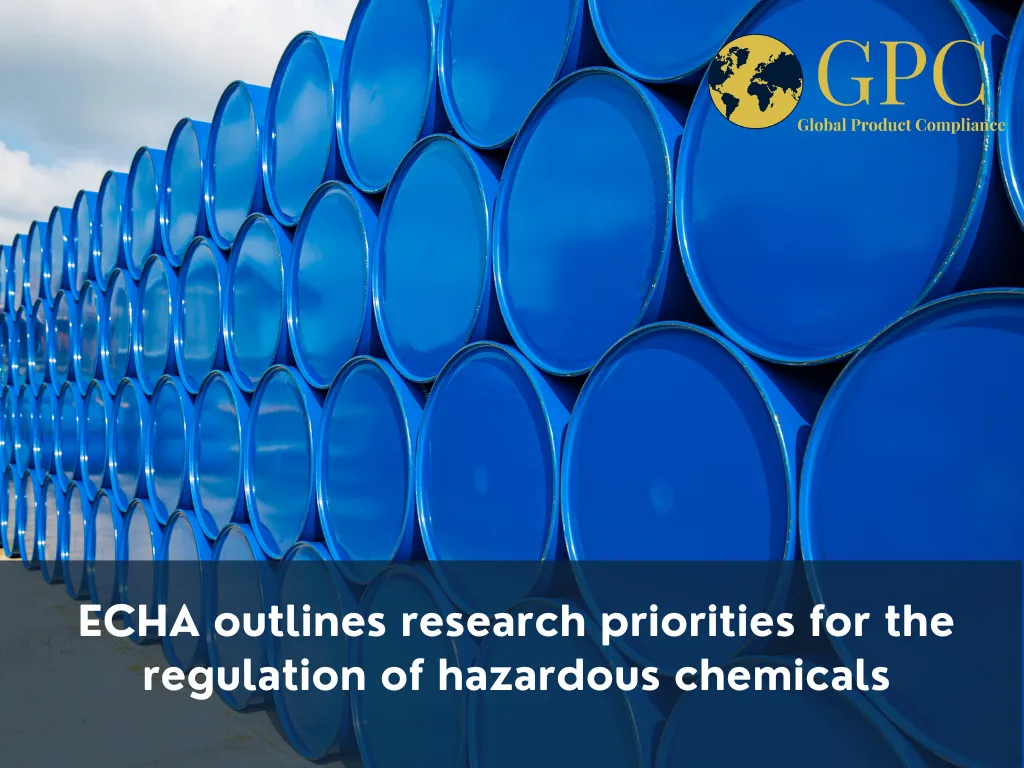- Home
- News Details
News Details

ECHA outlines research priorities for the regulation of hazardous chemicals
2023-11-21 Reference source : ECHA
Animal testing Chemicals Strategy for Sustainability Sustainability New Approach Methodologies NAMs
On 15 November 2023, the European Chemicals Agency (ECHA) published a news report that identifies areas where research is needed to protect human health and the environment. The report entitled "Key areas of regulatory challenges” also highlights areas where new methods are needed to support the move away from animal testing.
Background
The implementation of the Chemicals Strategy for Sustainability (CSS) calls for ECHA to review its advisory role on the issues where it can provide the most valuable input. Therefore ECHA has started to map its Key Areas of Regulatory Challenge (KARC) as part of the European Partnership for the Assessment of Risks from Chemicals (PARC) project.
The PARC project is a seven-year EU-wide research and innovation project that aims to advance research, share knowledge, and improve skills in chemical risk assessment. ECHA’s role in PARC is to ensure that the scientific research funded addresses current challenges in chemical risk assessment and adds value to EU regulatory processes.
Priority areas for research
In order to improve chemical safety in the EU, it is essential that scientific research provides data relevant to the rregulation of chemicals. ECHA has identified the following priority areas for research to improve the regulatory relevance of scientific data.
-
Protection against the most harmful chemicals. Hazard identification for critical biological effects for which specific and sensitive test methods are currently lacking, i.e. developmental and adult neurotoxicity, immunotoxicity and endocrine disruption.
-
Addressing chemical pollution in the natural environment. Key areas include bioaccumulation, extending biodiversity protection, and exposure assessment.
-
Moving away from animal testing. Development of New Approach Methods (NAMs) to facilitate reduction of animal testing for read-across under REACH, move away from fish test to determine fish toxicity, and mechanistic support for toxicology studies e.g. carcinogenicity).
-
Improve the availability of chemical data in particular for polymers and nanomaterials. Development of analytical methods to ensure proper assessment of hazardous substances.
Mike Rasenberg, ECHA’s Director of Hazard Assessment, emphasised the urgency of aligning scientific research with regulatory needs "ECHA believes that to achieve the ambitions of the European Green Deal and the EU’s Chemicals Strategy for Sustainability we need more scientific research with regulatory relevance." He added: "There is a growing need for new test methods that do not rely on animals, and a better understanding of the toxicological mode of action of certain hazardous chemicals. Generating the necessary data without animal testing while protecting health and the environment cannot be achieved without scientific progress."
The full text of the report is available here.
We acknowledge that the above information has been compiled from ECHA.
Global Product Compliance (GPC) specializes in Global Regulatory Compliance Solutions across sectors
globally. SSS Europe, a familiar name in chemical regulatory and compliance services now formally belongs
under the umbrella of GPC Holding Sweden.
Since 2008, we have emerged as one of the leading names among Global Regulatory Compliance Service
Providers with Representation services in Europe, Asia and Middle East for respective chemical
regulations.


